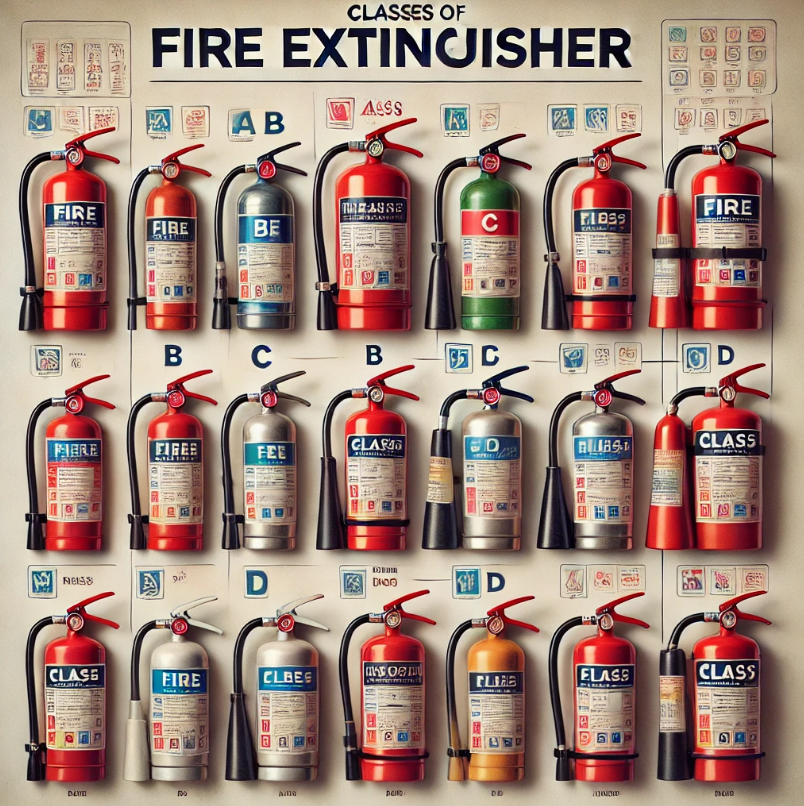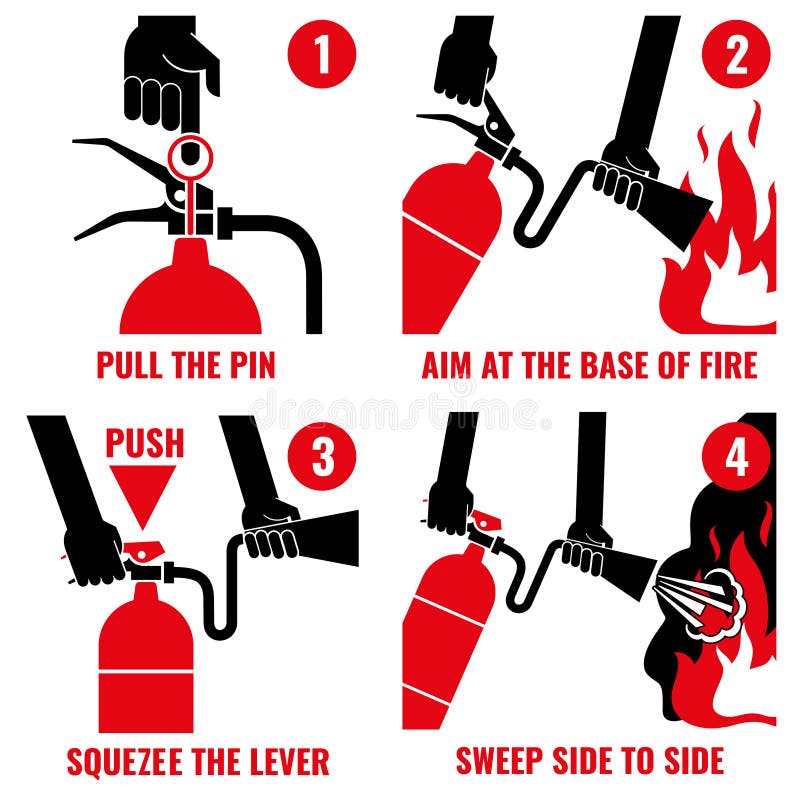In the face of a fire emergency, knowledge is your greatest asset. Fire safety expertise equips individuals with the skills and confidence to respond effectively, potentially saving lives and property. This guide covers fire extinguisher classes, using them effectively, and essential training tips.
Let’s embark on a journey to empower individuals and create safer environments through effective fire safety education.
What Are Fire Extinguisher Classes?

Fire extinguishers are devices that extinguish or handle small fires before they increase rapidly. Based on the types of fires, they are classified into five main classes they can extinguish. Here are common types of extinguishers include:
Water-Fire Extinguishers:
- Effective for Class A fires
- Designed for ordinary combustibles such as paper, wood & plastics
CO2 (Carbon Dioxide) Fire Extinguishers:
- Helpful for Class B and Class E fires
- Intended for flammable combustible liquids and electrical fires
Dry Chemical Fire Extinguishers:
- Used for Class A, B, C and E fires
- Specially designed for Paper, wood, and plastics, flammable combustible liquids, flammable gases, and electrical fires
Foam Fire Extinguishers:
- Suitable for Class A and B fires
- developing a barrier to stop re-ignition.
Wet Chemical Fire Extinguishers:
- Used for Class F fires
- Effective for kitchen fires including cooking oils and fats
Different Classes Of Fires and Their Effective Use
Class A fires:
- Fuels: Wood, paper, fabric, plastics, and rubbish.
- Extinguishing Agents: Water and foam are effective due to their cooling properties.
- Technique: Remove the heat source and cool the burning material.
Class B Fires:
- Fuels: Gasoline, diesel, oils (excluding cooking oils), and paints.
- Extinguishing Agents: Foam, dry chemicals, and carbon dioxide, which cut off the oxygen supply.
- Strategy: Prevent the fire from spreading by controlling the fuel source.
Class C Fires:
- Fuels: Flammable gases like propane, butane, and natural gas.
- Extinguishing Agents: Dry chemicals or carbon dioxide, which don’t conduct electricity.
- Technique: Turn off the gas supply and extinguish the flames with a non-conducting agent.
Class D Fires:
- Fuels: Combustible metals like aluminum, magnesium, titanium, and sodium.
- Extinguishing Agents: Specialized dry powder agents designed for specific metals.
- Strategy: Use the appropriate extinguishing agent to prevent the fire from spreading and causing further damage.
Class E Fires:
- Fuels: Electrical equipment.
- Extinguishing Agents: Carbon dioxide or dry chemical powder, which doesn’t conduct electricity.
- Technique: De-energize the equipment before extinguishing the fire to prevent electrical shock.
Class F Fires:
- Fuels: Cooking oils and fats.
- Extinguishing Agents: Wet chemical extinguishers that form a soap-like substance to seal the fire.
- Strategy: Cool the fire and prevent re-ignition.
- Understanding the fire class is crucial for selecting the appropriate extinguisher and effectively combating the fire.
Are Fire Extinguishers Easy To Use?
No, it might be easy to use if someone has proper instruction or training. This is because choosing the wrong type of extinguisher for the current fire can lead to serious consequences. For example, using a water extinguisher on an electrical fire can lead to electrocution.
So, they are designed to be quite simple to operate, proper knowledge or training is important for both safe and effective use.
Why Fire Extinguisher Training Is Crucial
- For choosing the right fire extinguisher
- Essential for safe and effective use
- To know the PASS method (Pull, Aim, Squeeze, Sweep)
Always priorities your safety and evacuate if necessary.
Steps Involved In Fire Extinguisher Training
1. The PASS Technique:
- For proper use of fire extinguishers, remember the acronym PASS ( Pull, Aim, Squeeze, Sweep)
- Hold the fire extinguisher firmly and Pull the pin out to break the tamper seal
- Aim the nozzle at the base of the fire
- Squeeze the handle of the fire extinguisher. This helps you to release the extinguishing agent.
- Sweep the nozzle in a side-to-side motion, covering the base of the fire until the fire is put out.
2. Conducting Fire Extinguisher Training Sessions:
- Identify individuals who need fire safety training according to their roles. Priorities building managers, security personnel, and maintenance staff.
- Ensure participants are familiar with the building’s fire safety plan, including evacuation routes, assembly points, and emergency contact numbers.
- Cover the different classes of fires and the appropriate extinguishers for each. Use visual aids like infographics or diagrams to enhance understanding.
- Incorporate practical exercises where participants can handle fire extinguishers and practise the PASS technique in a controlled environment.
- Employ virtual reality simulations or fire extinguisher training props for enhanced learning without the risk of a real fire.
3. Executing Ongoing Training Initiatives:
Fire safety is an ongoing journey. To stay prepared, make sure everyone gets regular training on:
- Using extinguishers correctly
- Following fire safety rules
- Knowing what to do in a fire
To react quickly in the event of a fire, regular training helps everyone. So, stay informed and implement learning programs.
Benefits of Fire Extinguisher Training
Rapid Reaction:
By taking fire extinguisher training, you can react promptly to a fire situation, reducing the possible harm and loss of life.
Confidence and Strength:
People who receive fire extinguisher training are more likely to handle emergency circumstances confidently and decisively.
Diminished Property Losses:
In the case of a fire, immediate action can greatly minimize property loss.
Improved Security at Work:
The workplace is generally safer when competent staff members foster a sense of readiness and reliability.
Compliance of Regulations:
Fire extinguisher training promotes compliance with safety regulations and helps create a safe environment.
Why Annual fire extinguisher inspection is important?
To keep your property, people, and the environment safe, it’s important to inspect your fire extinguishers regularly. Annual inspections by a professional can help:
- Make sure your extinguishers are working correctly.
- Check that they meet all fire safety rules.
Inspections may prevent property damage, save financial loss, save lives, and identify issues before they get out of hand.
N8 Fire and Safety is your trusted partner for fire safety. Hire us for expert inspections, maintenance, and advice to ensure your property and people are protected.





